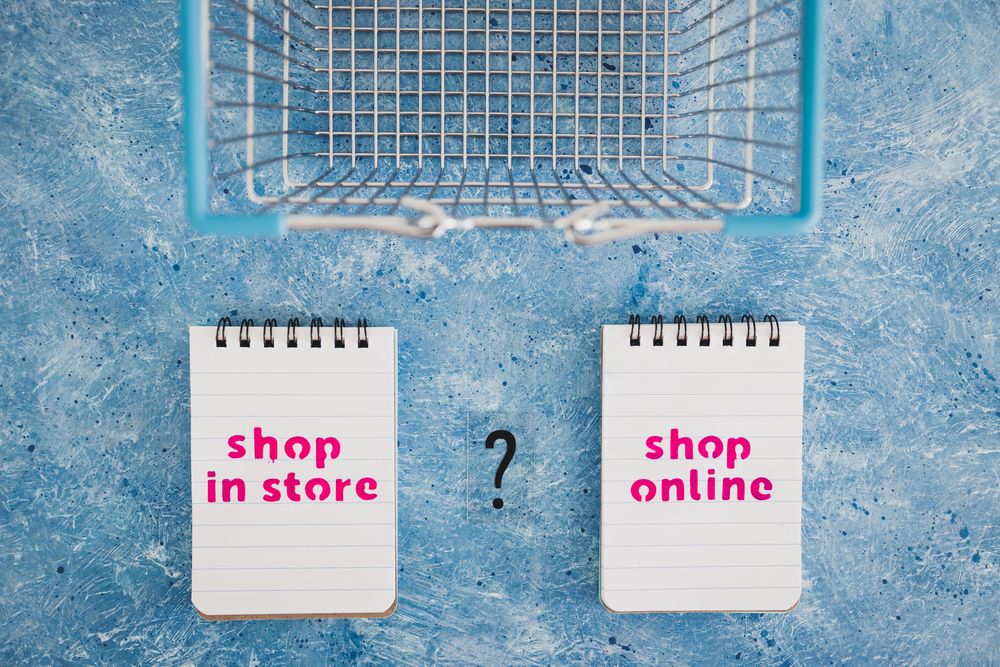In today’s digital world, shopping has never been easier. With just a few clicks, you can order almost anything and have it delivered to your doorstep. However, despite the convenience of online shopping, traditional brick-and-mortar stores still hold significant advantages, particularly when it comes to certain purchases. While online shopping often offers better prices and selection, in-store shopping allows for hands-on experiences, instant gratification, and the ability to assess quality before purchasing.
So how do you decide when to shop online versus when to visit a store? This guide breaks down the key factors to consider, helping you make smarter shopping decisions based on price, convenience, product type, and overall shopping experience.
1. When to Buy Online
Online shopping is ideal for products that don’t require immediate use, hands-on testing, or specialized guidance from a salesperson. Here are the best scenarios for shopping online:
a) When You Want the Best Price
Online retailers frequently offer lower prices than physical stores due to reduced overhead costs. Many e-commerce platforms also provide:
- Exclusive online discounts
- Price comparison tools (e.g., Google Shopping, Honey, CamelCamelCamel for Amazon price tracking)
- Promo codes and cashback offers from browser extensions and reward programs
If you’re shopping for electronics, books, household items, or clothing, you’re more likely to find a better deal online.
b) When Selection and Variety Matter
If you need a specific brand, size, or hard-to-find item, shopping online is often the best choice.
- Online retailers provide a wider selection than physical stores, which have limited shelf space.
- Specialty items, like customized products, niche brands, or international goods, are easier to find online.
For example, if you’re searching for a rare sneaker model, a discontinued beauty product, or a specialty kitchen gadget, an online marketplace like Amazon, eBay, or a brand’s official website is your best bet.
c) When You Want to Avoid Crowds and Hassle
Shopping in-store can be time-consuming, especially during holidays, sales events, or weekends. Online shopping eliminates:
- Waiting in long lines
- Dealing with out-of-stock products
- Driving and parking issues
For items like holiday gifts, home essentials, and bulk goods, ordering online can save time and stress.
d) When Free Shipping and Easy Returns Are Available
Retail giants like Amazon, Walmart, and Target offer free shipping and hassle-free returns, making online shopping risk-free for many products. Some key considerations:
- Look for stores with generous return policies (e.g., Zappos' free returns on shoes).
- Subscription services like Amazon Prime and Walmart+ provide additional perks, such as free shipping and exclusive deals.
e) When You’re Buying Digital or Subscription-Based Products
For items that don’t require physical delivery, shopping online is the only choice. Examples include:
- Streaming services (Netflix, Spotify, Disney+)
- E-books and audiobooks (Kindle, Audible)
- Software and video games (Microsoft Office, PlayStation Store)
Online purchases eliminate the need for packaging and shipping, making them more eco-friendly and convenient.

2. When to Buy In-Store
Despite the rise of online shopping, certain purchases are still better made in person. Here’s when shopping in-store is the smarter option:
a) When You Need to Try Before You Buy
Some products require hands-on evaluation before purchase, including:
- Clothing and footwear – Sizing varies by brand, and trying items on ensures the perfect fit.
- Furniture and mattresses – Comfort and durability are best assessed in person.
- Makeup and skincare – Color matching and texture testing are crucial for beauty products.
Many retailers allow in-store testing, making them the better option for purchases that require personal preference evaluation.
b) When You Need the Item Immediately
If you can’t wait for shipping, in-store shopping is the way to go. This applies to:
- Urgent medical supplies (e.g., medications, first-aid kits)
- Last-minute gifts (especially during holidays)
- Groceries and perishables (fresh produce, dairy, meat)
Many stores now offer same-day pickup options, allowing you to order online and collect in-store within hours.
c) When You Want Expert Advice
Some purchases require guidance from knowledgeable salespeople. In-store shopping is better for:
- Electronics (TVs, cameras, computers) – Sales associates can explain specs and features.
- Home improvement items (paint, tools, flooring) – Experts can provide DIY advice.
- Fitness equipment and outdoor gear – Trying products like bikes, hiking boots, and kayaks ensures comfort and suitability.
Specialty retailers like Best Buy, REI, and Home Depot offer in-store consultations that can help you make informed decisions.
d) When You Want to Inspect for Quality
Shopping in-store allows you to check for defects, authenticity, and overall quality before purchasing. This is especially important for:
- Fresh food and produce – Grocery stores let you pick the best-quality items.
- High-end fashion and luxury goods – Authenticity is easier to verify in person.
- Home décor and appliances – Ensuring proper condition before purchasing can prevent returns.
While online reviews help, nothing replaces physically inspecting a product before purchase.
e) When You Want to Support Local Businesses
Shopping in-store can help small businesses thrive. By purchasing from local boutiques, farmers’ markets, and specialty stores, you:
- Support the local economy
- Get personalized service
- Access unique, handcrafted items
If you value community-driven commerce, in-person shopping is a great way to contribute.
3. Hybrid Shopping: The Best of Both Worlds
Sometimes, combining both online and in-store shopping methods offers the best experience. Here are some ways to maximize savings and convenience:
a) Buy Online, Pick Up In-Store (BOPIS)
Many major retailers offer BOPIS services, allowing you to:
- Shop online for the best price and availability.
- Pick up the item at a nearby store the same day.
- Avoid shipping fees and delivery wait times.
Popular stores like Target, Walmart, and Best Buy make this process seamless.
b) Use In-Store Showrooming, Then Buy Online
Many shoppers visit stores to test a product, then buy it online for a better deal. This is common with:
- Electronics (e.g., laptops, headphones)
- Furniture and appliances (after testing durability in-store)
- Shoes and clothing (checking fit before ordering online for discounts)
If you find a better deal online, check if the store offers price matching to get the best deal in person.
c) Scan for Deals In-Store While Browsing
Use price comparison apps like ShopSavvy or Honey to scan barcodes in-store and see if a cheaper price exists online. Some retailers, like Target and Walmart, match online prices if you show proof.
Making Smart Shopping Choices
Both online and in-store shopping have unique advantages. The key to making the best purchasing decision lies in understanding your priorities—whether it’s cost, convenience, quality inspection, or expert advice.
- Shop online when you want the best price, variety, and delivery convenience.
- Shop in-store when you need to try products, get expert advice, or make urgent purchases.
- Combine both methods by using price-matching, BOPIS services, and showrooming techniques to maximize savings and convenience.
By being a smart shopper and knowing when to choose each option, you can get the best of both worlds while making the most informed and cost-effective purchases.





